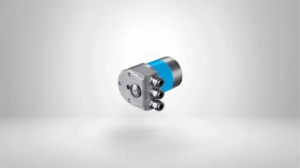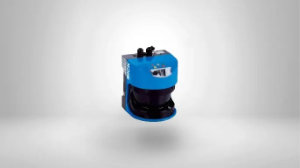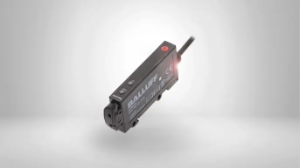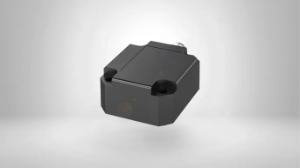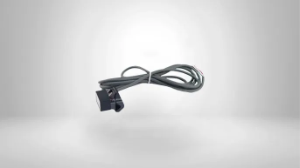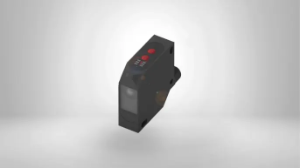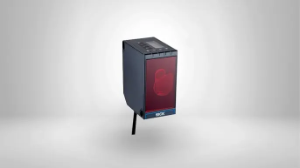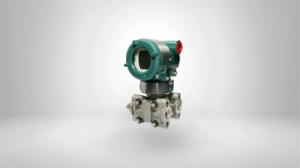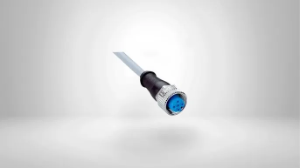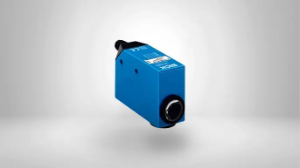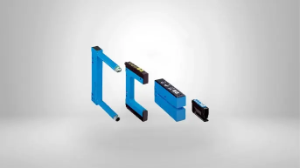Sensors
At Centro, we carry a complete selection of sensors for all your industrial needs. Whether you're looking for a Detection Sensor to help with the early detection of potential problems or a Gas Detection Sensor...
Sensor adapters are connectors or interfaces allowing seamless integration and compatibility between sensor types or models. These adapters provide a standardized connection interface, enabling sensors to connect easily to various systems or devices. Sensor adapters may include signal converters, wiring adapters, or mounting adapters, depending on the specific requirements of the sensor and the target system. They facilitate efficient sensor integration, ensuring accurate data acquisition and compatibility in various industrial and automation applications.
Sensor cables are specialized cables designed for connecting sensors to control systems or data acquisition devices. These cables provide the necessary electrical connections for transmitting power supply, signal, and data between the sensor and the target device. Sensor cables are often shielded to minimize interference and maintain signal integrity in noisy industrial environments. They come in different lengths, connector types, and specifications to accommodate various sensor configurations and connectivity requirements. Sensor cables ensure reliable and accurate data transmission from sensors to the control or monitoring systems.
Sensor connectors are specialized connectors designed for secure and reliable electrical connections between sensors and other devices or systems. These connectors ensure proper mating, sealing, and protection of sensor connections, preventing signal loss, interference, or damage. Sensor connectors are available in various types, including circular connectors, rectangular connectors, or industry-specific connectors, offering options for different sensor applications and environments. They provide a robust and reliable interface, enabling quick and easy installation or replacement of sensors in industrial, automotive, or electronic systems.
Detection and ranging sensors, such as LiDAR (Light Detection and Ranging) and ultrasonic sensors, are advanced devices used for object detection, distance measurement, and obstacle avoidance in robotics, automation, and autonomous systems. These sensors utilize various principles, such as laser beams or sound waves, to detect and measure distances to objects or surfaces accurately. Detection and ranging sensors provide precise and real-time distance information, enabling robots, vehicles, or machines to navigate complex environments, perform mapping tasks, or avoid collisions.
Fiber optic sensors utilize light to detect changes in their environment, converting these changes into readable signals. Fiber optic sensors are highly valued for their precision, speed, and immunity to electromagnetic interference, which makes them ideal for use in harsh environments. Applications range from telecommunications, where they help in high-speed data transmission, to medical instruments and industrial monitoring systems. Fiber optic sensors are crucial in situations where traditional electronic sensors might fail due to environmental factors. Browse our selection of products or contact us to speak with a product expert.
Inclination sensors, also known as tilt sensors or inclinometers, are devices used to measure the angle or tilt of an object with respect to gravity. These sensors provide precise inclination information, allowing for the monitoring of angular position, orientation, or inclination changes in machinery, structures, or vehicles. Inclination sensors are utilized in applications such as leveling systems, platform stabilization, construction equipment, and motion control. They offer reliable and accurate measurements, enabling efficient monitoring and control of inclination-related parameters in different industries.
Level sensors are devices used to measure and monitor the level of liquids, powders, or granular materials in tanks, vessels, or containers. These sensors provide information about the fill level, ensuring efficient inventory management, process control, or safety monitoring. Level sensors utilize different technologies, including ultrasonic, capacitive, optical, or float-based methods, depending on the application and the properties of the material being measured. They are widely used in industries such as manufacturing, agriculture, wastewater treatment, and food processing.
Magnetic cylinder sensors are proximity sensors specifically designed to detect the position or movement of magnetic piston cylinders. These sensors use a magnetic field to sense the presence of a magnet embedded in the cylinder's piston or end cap. Magnetic cylinder sensors provide feedback on the cylinder's extension or retraction, allowing for precise control, monitoring, or automation of pneumatic or hydraulic cylinder operations. They are commonly used in industrial applications such as automated machinery, assembly lines, and process control systems.
Photoelectric sensors are versatile devices used for non-contact detection of objects or changes in light intensity. These sensors emit a light beam and detect the presence or absence of an object based on the reflected or interrupted light. Photoelectric sensors offer various detection modes, including through-beam, diffuse reflective, and retroreflective, providing flexibility for different sensing applications. They are utilized in industrial automation, packaging, material handling, and other industries for tasks such as object detection, counting, or position verification.
Proximity sensors are devices used to detect the presence or proximity of objects without physical contact. These sensors utilize different technologies, such as inductive, capacitive, or magnetic, to sense the presence of objects within their detection range. Proximity sensors offer reliable detection, unaffected by color, texture, or transparency of the objects being sensed. They are widely used in industrial automation, robotics, security systems, and equipment safety applications, providing reliable object detection, position sensing, or obstacle avoidance capabilities.
Color sensors designed for automation are sophisticated tools that enhance industrial processes by precisely detecting and differentiating colors. These sensors utilize advanced optical technology to accurately identify colors and shades, enabling automation systems to sort, inspect, and ensure quality control. Widely used in industries such as food, textiles, and automotive, color sensors contribute to consistent product quality, reduced waste, and streamlined production. Their ability to discern even subtle color variations makes them invaluable in maintaining standards and detecting defects. By integrating color sensors into automation workflows, industries can achieve enhanced accuracy, reduced errors, and improved overall efficiency, making them a vital asset in modern manufacturing environments.
Distance sensors are devices that measure the distance between the sensor itself and an object or surface. Distancde sensors use various technologies such as ultrasonic, laser, or infrared to accurately determine distances. These sensors find wide applications in robotics, industrial automation, automotive safety systems, and consumer electronics. Their ability to provide precise distance measurements is essential for tasks ranging from obstacle detection to navigation and positioning. Browse our selection of distance sensors below or contact us to speak to a product expert.
Encoders are electromechanical devices used to convert mechanical motion or position into electrical signals. These devices provide feedback on the position, speed, or direction of rotating components, such as motors, shafts, or robotic joints. Encoders offer high accuracy and resolution, enabling precise control and positioning in industrial automation, robotics, CNC machines, or motion control systems. They are available in various types, including optical encoders, magnetic encoders, or capacitive encoders, providing options for different motion sensing requirements.
Flow sensors, also known as flow meters, are instruments used to measure the rate of fluid flow in pipelines, ducts, or systems. These sensors provide accurate information about the flow rate or total volume of liquids or gases passing through them. Flow sensors utilize different principles, such as ultrasonic, electromagnetic, or thermal, to measure flow velocity or changes in pressure, temperature, or displacement. They find applications in industries such as HVAC, water management, process control, and automotive, enabling efficient monitoring, control, or regulation of fluid flow.
Pressure sensors, also known as pressure transducers or pressure transmitters, are devices used to measure and monitor pressure levels in various systems and applications. These sensors convert pressure into an electrical signal, providing real-time information about pressure changes or absolute pressure values. Pressure sensors are employed in industries such as HVAC, manufacturing, automotive, and aerospace for tasks like pressure monitoring, control, or safety. They offer accuracy, reliability, and compatibility with different media and pressure ranges, facilitating precise pressure measurement in diverse environments.
Sensor accessories encompass a wide range of supplementary components and tools used to enhance the functionality, installation, or protection of sensors. These accessories include mounting brackets, mounting hardware, protective covers, cable glands, connectors, and calibration tools, among others. Sensor accessories ensure proper installation, secure sensor attachment, and protection against environmental factors, enhancing sensor performance and longevity. They play a vital role in the seamless integration and reliable operation of sensors in various industrial and automation applications.
Temperature sensors are devices used to measure and monitor temperature levels in various industrial, HVAC, or scientific applications. These sensors provide accurate temperature readings for process control, environmental monitoring, equipment protection, or research purposes. Temperature sensors utilize different technologies, including thermocouples, resistance temperature detectors (RTDs), or thermistors, offering options for different temperature ranges and accuracy requirements. They are crucial in ensuring optimal operating conditions, safety, and efficiency in diverse temperature-sensitive applications.
Ultrasonic sensors utilize sound waves at frequencies higher than the audible range to detect objects' presence, distance, or position. These sensors emit ultrasonic pulses and measure the time the echoes return, enabling precise distance measurement and object detection. Ultrasonic sensors are used in various industrial, robotics, automotive, and security applications, providing non-contact sensing capabilities. They offer reliable performance in different environmental conditions unaffected by the color, transparency, or surface texture of the detected objects.
Capacitive sensors are devices used for non-contact detection of objects or changes in capacitance. These sensors utilize changes in electrical capacitance to detect the presence, proximity, or position of objects. Capacitive sensors offer high sensitivity and accuracy, making them suitable for detecting various materials, including solids, liquids, or powders. They are employed in industrial automation, packaging, level sensing, or touch applications, providing reliable and precise sensing capabilities. Capacitive sensors enable non-contact and robust detection, even in challenging or harsh environments.
RFID (Radio-Frequency Identification) is a cutting-edge technology transforming how businesses manage inventory, track assets, and enhance security. With RFID, small chips or tags can store and transmit data wirelessly, allowing for real-time industry monitoring and automation. These versatile devices are used in logistics, retail, healthcare, and more to improve efficiency, reduce errors, and streamline operations. RFID is ushering in a new era of data-driven decision-making and is at the forefront of the Internet of Things (IoT) revolution.
Condition monitoring is critical in industries that rely on machinery and equipment for operations. It involves real-time equipment health and performance assessment to prevent unexpected breakdowns and reduce maintenance costs. With sensors, data analysis, and predictive maintenance technologies, condition monitoring empowers businesses to optimize their assets and ensure smooth, uninterrupted operations.
A luminescence scanner designed for automation is a cutting-edge technology that revolutionizes industrial processes through rapid and accurate material analysis. By detecting luminescent signals emitted by substances, this scanner enables non-invasive identification, quantification, and quality control of materials. In automation, it finds application in diverse sectors like pharmaceuticals, food, and electronics. The luminescence scanner enhances efficiency by swiftly assessing material characteristics, ensuring product integrity, and streamlining quality assurance. With its advanced capabilities, this technology empowers industries to elevate their automation processes, enhance product quality, and ensure compliance with rigorous standards, marking a significant step toward a more sophisticated and reliable automated future.
A contrast sensor tailored for automation is a versatile technology that elevates industrial processes by precisely detecting differences in color or contrast between objects. Employed in diverse applications, this sensor enables automation systems to accurately identify objects, monitor production lines, and facilitate quality control. The contrast sensor's advanced optical capabilities ensure consistent and reliable differentiation even in challenging environments. Packaging, automotive, and electronics industries benefit from improved process efficiency, reduced errors, and enhanced product quality. The contrast sensor's integration into automation workflows enhances productivity by providing real-time feedback and enabling rapid adjustments. By harnessing this technology, industries can achieve heightened automation accuracy and streamline operations for a more efficient future.
Automation light grids are a sophisticated technology that enhances industrial processes by providing precise detection and measurement capabilities across a defined area. Consisting of multiple light beams, these grids detect the interruption or presence of objects in real-time. Used in various applications, such as conveyor systems, access control, and robotic safety, automation light grids improve safety, accuracy, and efficiency. Their ability to detect even small objects or irregular shapes makes them invaluable in optimizing material handling and automation workflows. By quickly identifying potential hazards and ensuring precise positioning, these light grids contribute significantly to streamlined operations, reduced downtime, and enhanced overall productivity, making them a cornerstone of modern industrial automation.
Motor feedback sensors are essential components in industrial automation, offering accurate monitoring and control of motor movements. These sensors provide real-time feedback on parameters such as speed, position, and direction, enabling precise motor control and enhancing system performance. Employed in various applications including robotics, CNC machinery, and conveyor systems, motor feedback sensors ensure optimal operation and prevent errors. With their advanced technology, these sensors facilitate closed-loop control, improving accuracy and reliability. By delivering actionable data to automation systems, motor feedback sensors contribute significantly to smoother operation, reduced downtime, and improved overall productivity, making them indispensable in modern industrial processes.
Fork sensors are critical in industrial automation, providing efficient and accurate object detection within defined areas. Comprising a sender and receiver unit, these sensors create a "fork" of infrared light beams. When an object interrupts the beams, the sensor triggers a response, enabling reliable detection. Fork sensors are versatile, finding applications in packaging lines, material handling, and assembly processes. Their ability to detect small, transparent, or irregular objects enhances production efficiency and quality control. By swiftly identifying object presence or absence, fork sensors streamline automation workflows, reduce errors, and enhance overall productivity, making them tools in modern manufacturing environments.
$72.94
Subject to factory lead times
$92.47
Subject to factory lead times
$235.46
Subject to factory lead times
$217.64
Subject to factory lead times
$471.23
Subject to factory lead times
$185.11
Subject to factory lead times
$195.07
Subject to factory lead times
$351.72
Subject to factory lead times
Subject to factory lead times
$72.94
Subject to factory lead times
$92.47
Subject to factory lead times
$235.46
Subject to factory lead times
$217.64
Subject to factory lead times
$471.23
Subject to factory lead times
$185.11
Subject to factory lead times
$195.07
Subject to factory lead times
$351.72
Subject to factory lead times
Subject to factory lead times

